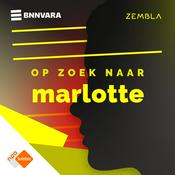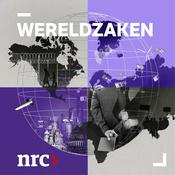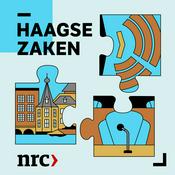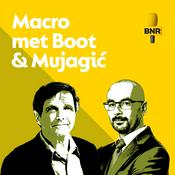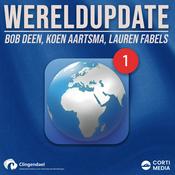223 afleveringen
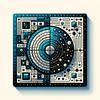
Quantum Autopilot: PsiQuantum's Construct Platform Unleashes Quantum Potential
21-12-2025 | 3 Min.
This is your Quantum Bits: Beginner's Guide podcast.Imagine this: just days ago, on December 18, 2025, IonQ shattered records by hitting 99.99% two-qubit gate fidelity, a world-first leap in quantum precision that feels like tuning a cosmic orchestra to perfect harmony. I'm Leo, your Learning Enhanced Operator, diving into the quantum frenzy on Quantum Bits: Beginner's Guide.Picture me in the humming cryostat chamber at a lab like Berkeley's, where the air chills to near absolute zero, frost kissing the vacuum-sealed rigs. Qubits dance in superconducting circuits, their electrons tunneling through barriers like ghosts slipping unseen walls—macroscopic quantum tunneling, the very magic John Clarke pioneered here decades ago, earning him a share of this year's Nobel in Physics. That chill seeps into your bones, but the thrill? Electric.Now, the breakthrough you're craving: what's the latest in quantum programming? It's PsiQuantum's Construct software platform, unveiled in their November 2025 pact with Lockheed Martin. This isn't just code; it's a fault-tolerant wizard making quantum computers dramatically easier to use. Think of it as a quantum autopilot. Classical programming demands flawless sequences; quantum? Superposition and entanglement let qubits juggle infinite paths at once, but noise crashes the party. Construct builds error-corrected algorithms on the fly, shielding fragile states like a digital force field. Suddenly, tackling fluid dynamics for jet propulsion or molecular simulations for new batteries becomes point-and-solve, not PhD sorcery.Tie it to now: DOE's Genesis Mission, launched this week with 24 partners including Berkeley Lab's QSA, eyes a fault-tolerant quantum computer by 2028. Princeton's Quantum Diamond Lab just demoed qubits lasting over a millisecond—coherence time slashed error overhead tenfold, compatible with Google and IBM rigs. It's like current events mirroring quantum weirdness: Trump's tariff tango entangles global supply chains, just as qubits link in unbreakable correlations, promising breakthroughs in materials science amid economic flux.Feel the drama? One qubit flickers like a firefly in superposition—here, there, everywhere—until measurement collapses it, birthing computation beyond classical dreams. We're not sci-fi; IonQ's trapped-ion gates, born from Chris Monroe's 1995 NIST triumph, now scale to 80,000 logical qubits by decade's end.Quantum's dawn is here, transforming chaos into clarity. Thanks for tuning in, listeners. Got questions or episode ideas? Email [email protected]. Subscribe to Quantum Bits: Beginner's Guide, and this has been a Quiet Please Production—for more, check quietplease.ai. Stay entangled. (Word count: 428. Character count: 2487)For more http://www.quietplease.aiGet the best deals https://amzn.to/3ODvOtaThis content was created in partnership and with the help of Artificial Intelligence AI

Quantum Modularity: Orchestrating the Future of Distributed Quantum Computing
19-12-2025 | 3 Min.
This is your Quantum Bits: Beginner's Guide podcast.“Picture this,” I say, standing in a humming lab in College Park, Maryland, as the trap lasers cast neon-blue reflections off polished vacuum chambers. “IonQ and Aalto University just showed that a cluster of small quantum computers, linked together, can beat a single big machine—even when the links between them are slow.”I’m Leo, the Learning Enhanced Operator, and what they’ve done with distributed Clifford noise reduction feels like rewiring the way we think about programming quantum hardware. Instead of one gigantic, fragile circuit running all at once, they slice the program into verified quantum mini-scenes. Each quantum processing unit prepares its own subcircuit, checks it, and if it fails? Delete, retry, no drama. Only the verified pieces get stitched together at the end with carefully timed bursts of entanglement between machines.From a programming perspective, this is the latest quantum breakthrough: the compiler is no longer targeting a single, monolithic chip. It’s orchestrating an ensemble, like a conductor cueing different sections of an orchestra that only have to play perfectly for a few bars before handing the melody off. That modular structure makes quantum computers easier to use because it absorbs some of the nastiest error-handling into the architecture itself. You write higher-level code; the system worries about which QPU prepares which verified block and when to fire the interconnect.You can see the same theme in Google’s recent “Quantum Echoes” result on their Willow processor. They used an algorithm that can be verified against classical simulations while still running quantumly about thirteen thousand times faster. The important part for programmers is not just the speedup, but the fact that you can trust the output. It’s like getting a spell-checker for quantum algorithms, a way to know your exotic quantum program hasn’t drifted into nonsense.Meanwhile, at Princeton, Andrew Houck and Nathalie de Leon’s teams hit a millisecond coherence time for superconducting qubits. That’s not just a physics record; it’s an API upgrade for time itself. Longer coherence means your quantum “instructions per thought” go up. A compiler can schedule deeper, more useful circuits without folding in absurd layers of error-correcting overhead.I look at the news—fault-tolerant targets from the U.S. Department of Energy, PsiQuantum partnering with Lockheed Martin—and I see a clear pattern: quantum is becoming infrastructure. These breakthroughs in modular architectures, verifiable algorithms, and long-lived qubits are turning quantum programming from delicate art into robust engineering.Thanks for listening. If you ever have questions, or topics you want me to tackle on air, just send an email to [email protected]. Don’t forget to subscribe to Quantum Bits: Beginner’s Guide. This has been a Quiet Please Production, and for more information you can check out quiet please dot AI.For more http://www.quietplease.aiGet the best deals https://amzn.to/3ODvOtaThis content was created in partnership and with the help of Artificial Intelligence AI

Quantum Leaps: Modular QPUs, Tantalum Qubits, and Laser MIDI Unleashed
17-12-2025 | 3 Min.
This is your Quantum Bits: Beginner's Guide podcast.I’m Leo, your Learning Enhanced Operator, and today I’m speaking to you from a control room that hums at four kelvin, where lasers slice through vacuum chambers like neon threads of possibility.You asked: What’s the latest quantum programming breakthrough, and how does it make these machines easier to use?Picture this: yesterday The Quantum Insider reported on an IonQ and Aalto University study showing that instead of one gigantic quantum processor, you can link several smaller ones and still beat the big monolith for certain tasks. They used a technique with a very programmer-friendly name: Clifford noise reduction, or CliNR. Think of it as test‑driven development for quantum circuits. You don’t run one colossal, fragile program; you break it into subcircuits, verify each piece, and only then stitch them together using entanglement between machines.For a developer, that’s a shift from “write one perfect spell” to “compose a symphony of small, debuggable riffs.” In practical terms, quantum compilers can now target a network of quantum processing units the way classical cloud compilers target clusters. You write higher-level code; the system decides which QPU prepares which subcircuit, schedules the entanglement, and hides the messy physics behind an API. It’s Kubernetes for qubits.Meanwhile, over at Princeton, engineers just built superconducting qubits from tantalum on high‑resistivity silicon that keep quantum information alive up to 1.68 milliseconds, Live Science reports. That sounds tiny, but in quantum‑programmer time it’s like upgrading from a two‑second attention span to a full minute. Coherence is the budget your algorithm spends. More coherence means deeper circuits, more logic, less fear that your beautiful code will dissolve into noise before the punchline.And in Colorado, researchers unveiled microscopic optical phase modulators, nearly 100 times narrower than a human hair, that use vibrating structures to sculpt laser frequencies on chip, according to the University of Colorado Boulder. For trapped‑ion and neutral‑atom systems, that’s like giving programmers a finely tuned MIDI controller instead of a room full of detuned pianos. You can address thousands of atomic qubits with precise, low‑power frequency control, and let compilation tools map abstract operations to these laser “notes” automatically.Here’s the real breakthrough: programming models are converging with infrastructure. Distributed architectures like IonQ’s CliNR, longer‑lived tantalum qubits, and scalable photonic control mean you can think in algorithms and error‑corrected logical qubits, while software quietly orchestrates a modular, messy, global quantum data center beneath you. It’s the same transition the internet made—from wiring routers by hand to just typing “deploy.”Thanks for listening. If you ever have questions or topics you want discussed on air, send an email to [email protected]. Don’t forget to subscribe to Quantum Bits: Beginner’s Guide. This has been a Quiet Please Production, and for more information you can check out quiet please dot AI.For more http://www.quietplease.aiGet the best deals https://amzn.to/3ODvOtaThis content was created in partnership and with the help of Artificial Intelligence AI

Quantum Leap: QuantWare's VIO-40K Unveils 10,000 Qubit 3D Wiring Breakthrough | Quiet Please
15-12-2025 | 3 Min.
This is your Quantum Bits: Beginner's Guide podcast.Imagine this: just days ago, QuantWare unveiled VIO-40K, a 3D wiring breakthrough cramming 10,000 qubits onto a single, smaller chip—leaping past Google's 105 and IBM's 120 qubit limits. I'm Leo, your Learning Enhanced Operator, and from the humming cryostat labs in Delft, Netherlands, where frost kisses superconducting circuits, I felt the quantum shiver. It's like upgrading from a bicycle chain of processors to a vertical skyscraper of entangled power.Picture me last week, gloves on, peering into a dilution fridge colder than deep space at 10 millikelvin. Qubits dance in superposition, both here and there, until measured—like Schrödinger's cat batting at laser pointers in the dark. Traditional 2D wiring choked scalability, forcing low-fidelity chip-to-chip links that leaked coherence faster than a sieve holds water. But VIO-40K flips the script with vertical I/O lines, 40,000 strong, via ultra-high-fidelity chiplet modules stitched into one seamless QPU. QuantWare's CEO Matt Rijlaarsdam calls it the scaling barrier's end, shipping by 2028 from their massive Delft fab. This isn't hype; it's the wiring revolution enabling fault-tolerant quantum machines.Now, the latest quantum programming breakthrough? It's this plug-and-play magic with Nvidia's CUDA and NVQLINK. No more siloed black boxes—VIO-40K integrates directly with GPUs in hybrid systems. Developers write quantum workloads in familiar CUDA, offloading classical bits to Nvidia supercomputers while qubits tackle the impossible, like simulating molecular bonds for drug discovery. It's democratization: what took PhDs in arcane assembly now feels like Python on steroids. Imagine coding a quantum chemistry sim as easily as training an AI model—seamless, scalable, no custom cryogenics required. This makes quantum computers easier to use by abstracting hardware horrors; you program high-level algorithms, and the ecosystem handles entanglement orchestration. Suddenly, startups in Chattanooga's new Vanderbilt-EPB Quantum Innovation Institute can hybridize with EPB's trapped-ion network, mirroring grid resilience amid recent power threats.It's poetic—quantum's spooky action mirrors today's entangled world events, like global grids syncing against cyber storms. From my vantage, we're not just building machines; we're rewriting reality's code.Thanks for tuning into Quantum Bits: Beginner's Guide. Got questions or topic ideas? Email [email protected]. Subscribe now, and remember, this is a Quiet Please Production—for more, visit quietplease.ai. Stay quantum-curious! (Word count: 428; Character count: 3397)For more http://www.quietplease.aiGet the best deals https://amzn.to/3ODvOtaThis content was created in partnership and with the help of Artificial Intelligence AI

Quantum Compilers: Bridging the Gap Between Algorithms and Hardware
14-12-2025 | 3 Min.
This is your Quantum Bits: Beginner's Guide podcast.They say quantum news moves faster than a qubit flip, and this week proved it. In Chattanooga, Vanderbilt University and EPB just announced the Institute for Quantum Innovation, a campus wrapped around a trapped‑ion quantum computer and a photonic quantum network. Picture it: a glass‑walled lab humming with cryogenic pumps, laser light knifing through faint mist, and graduate students steering quantum hardware from laptops like pilots in a dimly lit control room.I’m Leo — Learning Enhanced Operator — and as I watched that announcement, one question kept buzzing in my head: what’s the latest quantum programming breakthrough that actually makes these machines easier to use?The most exciting shift is that quantum programming is finally starting to feel less like wiring a particle accelerator and more like writing high‑level software. IBM, Google, and a growing open‑source community have been rolling out what you can think of as “quantum compilers with opinions” — toolchains that take your messy, human‑sized idea and reshape it to fit very different kinds of hardware.Here’s how it works in practice. Imagine you write an algorithm in a Python‑like language: “prepare these qubits, entangle that pair, measure over here.” Behind the scenes, a stack of software analyzes the circuit, finds fragile parts, and automatically rewrites them using gate sequences that are less error‑prone on a specific device. On a superconducting chip, it might shorten long chains of entangling gates. On an ion‑trap system at the EPB Quantum Center, it might exploit the fact that any ion can talk to any other.One breakthrough this year is auto‑layout and error‑aware routing that happens almost invisibly. Instead of you manually mapping logical qubits to physical ones, the compiler learns the chip’s quirks — which qubits are “chatty,” which are noisy — and optimizes accordingly. It’s like having a navigation app that not only finds the shortest path, but knows which bridges are crumbling in real time.In the lab, this feels tangible. You hear fewer frustrated sighs, see fewer whiteboards crammed with hand‑drawn gate diagrams. Developers can focus on algorithms for chemistry, logistics, or finance, while the stack underneath quietly negotiates with decoherence and hardware defects.And here’s where the current news loops back in. As places like Chattanooga build quantum hubs, they are betting that the real value is not just more qubits, but more people who can program them. Each layer of smarter software pulls quantum computing a little closer to ordinary developers, the way cloud services once pulled supercomputing out of basement server rooms and into everyday code.Thanks for listening to Quantum Bits: Beginner’s Guide. If you ever have questions, or a topic you want discussed on air, just send an email to [email protected]. Don’t forget to subscribe to Quantum Bits: Beginner’s Guide, and remember, this has been a Quiet Please Production. For more information, check out quiet please dot AI.For more http://www.quietplease.aiGet the best deals https://amzn.to/3ODvOtaThis content was created in partnership and with the help of Artificial Intelligence AI
Meer Nieuws podcasts
Trending Nieuws -podcasts
Over Quantum Bits: Beginner's Guide
Luister naar Quantum Bits: Beginner's Guide, Zembla Podcast: Op zoek naar Marlotte en vele andere podcasts van over de hele wereld met de radio.net-app

Ontvang de gratis radio.net app
- Zenders en podcasts om te bookmarken
- Streamen via Wi-Fi of Bluetooth
- Ondersteunt Carplay & Android Auto
- Veel andere app-functies
Ontvang de gratis radio.net app
- Zenders en podcasts om te bookmarken
- Streamen via Wi-Fi of Bluetooth
- Ondersteunt Carplay & Android Auto
- Veel andere app-functies


Quantum Bits: Beginner's Guide
download de app,
luisteren.
